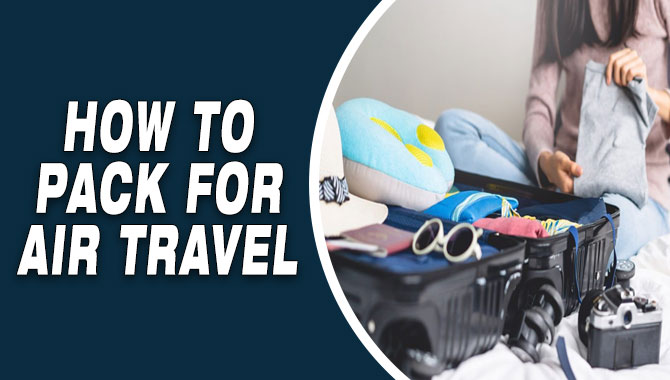Your Austria road trip base guide is here! Plan your perfect scenic adventure with essential tips for a smooth journey, covering everything from driving rules and tolls to packing and finding comfortable stops. Get ready for an unforgettable experience in Austria.
Planning a road trip through Austria is an exciting prospect. Imagine winding through the majestic Alps, exploring charming villages, and soaking in stunning lakes. It’s a dream for many, but the thought of navigating a foreign country by car can feel a little daunting. Don’t worry, fellow travelers! I’m here to help simplify your Austrian adventure. We’ll cover everything you need to know to make your trip comfortable, stress-free, and full of wonderful memories. From understanding the roads to packing smartly, we’ll break it all down so you can focus on the joy of discovery. Get ready to hit the road with confidence!
Why Austria is Perfect for a Road Trip
Austria’s compact size and incredible diversity make it an ideal destination for a road trip. Within a relatively short distance, you can go from the imperial grandeur of Vienna to the dramatic peaks of the Tyrol, and from the serene landscapes of the Salzkammergut lake district to historic cities like Salzburg. The well-maintained road network is a joy to drive on, offering breathtaking vistas around every bend. It’s a country that rewards exploration, inviting you to pull over at hidden viewpoints, stumble upon quaint inns, and truly immerse yourself in its natural beauty and rich culture. This ease of access and stunning scenery is why so many choose Austria for their next driving holiday.
Getting Started: Essential Pre-Trip Planning
Before you even think about packing your bags, a little bit of planning goes a long way. Getting these basics right will ensure your Austrian road trip is smooth sailing from the moment you start your engine.
1. Documentation is Key
Having the right paperwork is non-negotiable. Make sure you have:
- Passport: Ensure it’s valid for at least six months beyond your stay.
- Driver’s Licence: Your domestic licence is usually sufficient for short stays, but an International Driving Permit (IDP) is highly recommended. It’s a translation of your licence and can prevent language-related issues with authorities. You can often get an IDP from your local automobile association.
- Vehicle Registration and Insurance: If you’re driving your own car, bring all relevant documents. If you’re renting, ensure the rental agreement includes any necessary border-crossing permissions if you plan to venture outside Austria.
- European Health Insurance Card (EHIC) or GHIC: If you’re from an EU country or the UK, this covers emergency state healthcare. For other nationalities, ensure you have comprehensive travel insurance that includes medical emergencies.
2. Car Rental Considerations
Renting a car in Austria is straightforward. Here are some tips:
- Book in Advance: Especially during peak season, booking your car rental well ahead of time will secure you better rates and ensure availability.
- Choose the Right Vehicle: Consider the size of your group and the type of roads you’ll be driving. For mountainous regions, a car with good power and perhaps all-wheel drive might be beneficial, though generally not essential for main routes.
- Check for Unlimited Mileage: Ensure your rental agreement includes unlimited mileage so you don’t have to worry about racking up extra costs.
- Inspect the Car Thoroughly: Before driving off, do a quick inspection for any existing damage and make sure it’s documented on the rental agreement to avoid disputes later.
3. Navigating Austrian Roads: What You Need to Know
Austrian roads are generally excellent, but there are specific rules and requirements you must be aware of.
Vignette (Toll Sticker)
This is crucial! Most Austrian motorways (Autobahnen and Schnellstrassen) require a vignette. You must purchase and display this sticker on your windshield before using these roads. Failure to do so can result in hefty fines.
- Where to Buy: You can buy vignettes online in advance, at border crossings, petrol stations and tobacco shops (Trafiken) near the border.
- Types of Vignettes: They come in 10-day, 2-month, and annual durations. Choose the one that best suits your trip length.
- Digital Vignette: Austria also offers a digital vignette. You can purchase this online and link it to your vehicle’s license plate. Remember to buy it ahead of time if you’re coming from another country, as online purchases have a grace period for consumers. Check the official Asfinag website for details: Asfinag Vignette Information.
Speed Limits
Speed limits are clearly posted. Always pay attention.
| Road Type | Speed Limit |
|---|---|
| Motorways (Autobahn) | 130 km/h |
| Outside Built-up Areas | 100 km/h |
| Inside Built-up Areas | 50 km/h |
Winter Tyres and Chains
From November 1st to April 15th, winter tyres are mandatory for all vehicles in specific weather conditions (snow, ice, slush). Even outside these dates, if conditions warrant it, you must use them. Ensure they have the “M+S” marking. Snow chains may also be required on certain mountain passes and are mandatory in specific signage areas during winter. Check local regulations before you travel in winter months.
Headlights
Dipped headlights must be on at all times, day and night. Many modern cars have automatic headlights, but be sure to check if yours doesn’t.
Alcohol Limits
The blood alcohol limit in Austria is 0.5 per mille (0.05%). For new drivers (within two years of obtaining their licence) and professional drivers, the limit is even stricter at 0.1 per mille.
Mobile Phone Use
Using a mobile phone while driving is prohibited unless you have a hands-free system installed.
4. Essential Road Trip Gear
Having the right gear can make a world of difference in your comfort and preparedness. Think practical solutions for everyday needs, even on the road!
- Navigation: While GPS is invaluable, a good old-fashioned road map can be a lifesaver if electronics fail. Consider downloading offline maps on your smartphone as a backup.
- First-Aid Kit: A well-stocked kit is essential for any minor cuts or scrapes.
- Emergency Kit: Items like a warning triangle (mandatory in all vehicles), a high-visibility vest for each passenger (mandatory if you stop on a roadside), jumper cables, a basic toolkit, and a flashlight are wise to have.
- Snacks and Water: Especially for longer drives, having water and some non-perishable snacks can be a real comfort.
- Comfort Items: Neck pillows, a comfortable travel blanket, and appropriate clothing layers are key for making long drives more enjoyable.
- Hygiene Solutions: For those longer stretches between stops or if you have specific needs, consider discreet and reliable personal care items. Matters of personal comfort are important for everyone, whether it’s packing extra supplies for children or convenient options for adults needing briefs or pads during travel. Having these on hand can significantly reduce stress and allow you to relax and enjoy the journey without worry.
Planning Your Route: Scenic Drives and Must-See Stops
Austria is crisscrossed with stunning driving routes. Here are a few ideas to inspire your itinerary:
1. The Romantic Road (Romantische Straße)
While more famous in Germany, the Austrian section offers charm. It connects picturesque towns and castles radiating from the area around Würzburg (Germany) into Austria. It’s less about a single highway and more about following scenic routes through historic villages.
2. The Grossglockner High Alpine Road (Großglockner Hochalpenstraße)
This is arguably Austria’s most famous scenic drive. Open from May to October (weather permitting), it’s a masterpiece of engineering offering jaw-dropping views of Austria’s highest peak, the Grossglockner, and the Pasterze glacier. Be prepared for toll fees. It’s an experience in itself!
3. The Salzkammergut Road
This route takes you through the stunning lake district. Drive between charming towns like Hallstatt, St. Wolfgang, and Gmunden, with crystal-clear lakes reflecting the dramatic mountain scenery. Ideal for those who love nature and picturesque landscapes.
4. The Burgenland Wine Route (Burgenländische Weinstraße)
For wine lovers, this route through Austria’s easternmost state is a treat. It winds through rolling hills dotted with vineyards, charming wine villages, and traditional “Heuriger” (taverns) where you can sample local wines and cuisine. The Pannonian climate here makes for excellent wines.
5. The Silvretta High Alpine Road (Silvretta-Hochalpenstraße)
Located in Vorarlberg, this road is another alpine marvel. It opens later in spring than Grossglockner, offering spectacular mountain vistas, turquoise reservoirs, and challenging yet rewarding driving. It’s a favourite for motorcyclists but equally enjoyable for car travellers.
Making Your Trip Comfortable and Convenient
A successful road trip isn’t just about the destination; it’s about the journey. Focusing on comfort and convenience ensures you arrive at your stops refreshed and ready to explore.
1. Strategic Stops
Pace yourself! Don’t try to cover too much ground in one day. Plan for regular stops to stretch your legs, enjoy the scenery, and grab a refreshment. Austria has many excellent rest areas (Rastplätze) and service stations (Raststationen) with facilities.
2. Finding Accommodation
Austria offers a wide range of accommodation:
- Hotels and Gasthöfe: These range from budget-friendly inns to luxurious hotels. Many offer excellent local cuisine.
- Ferienwohnungen (Holiday Apartments): A great option for families or longer stays, offering more space and the ability to self-cater.
- Farm Stays (Urlaub am Bauernhof): Experience rural Austrian life and enjoy fresh, local products.
- Camping: For the adventurous and budget-conscious, numerous campsites are available, often in stunning natural locations.
Book accommodation in advance, especially in popular tourist areas and during peak seasons.
3. Dining on the Road
Austrian cuisine is hearty and delicious! Look out for:
- Gasthöfe: Traditional inns serving regional specialties.
- Konditoreien: Pastry shops offering delightful cakes and coffee – perfect for an afternoon treat.
- Heuriger: In wine-growing regions, these taverns serve young wine and simple, cold buffets.
- Service Stations: Modern service stations often have good restaurants and cafes, providing a convenient option for a quick meal.
4. Managing Personal Care and Comfort
Travel is for everyone, and ensuring personal comfort is key to enjoying the experience. For families travelling with young children, having easy access to diapers, wipes, and changing facilities can make all the difference. For adults who require them, discreet and reliable adult briefs or pads can ensure a stress-free journey, whether it’s during long driving stretches or exploring a new city. These practical solutions mean you can focus on the moment, not on accessibility concerns. Many larger service stations and pharmacies in towns will stock a range of these essentials, but it’s always wise to carry a supply with you.
5. Staying Connected
While it’s great to disconnect, having communication is important. Ensure your mobile phone plan works in Austria or consider purchasing a local SIM card upon arrival. Many hotels and cafes offer Wi-Fi.
Safety First: Driving in Austria
Austria is a safe country, but it’s always good to be prepared.
- Emergency Number: The pan-European emergency number is 112.
- Breakdowns: If you break down on a motorway, use your hazard lights, put on your high-visibility vest, and get your passengers to safety behind the guardrail before calling for assistance. Your car rental company or breakdown service will have numbers for you.
- Road Conditions: In winter, always check weather and road conditions before setting out, especially for mountain passes. The Austrian Automobile, Motorcycle and Touring Club (ÖAMTC) is an excellent resource for traffic information.
- Wildlife: Be aware of wildlife, especially in rural and forested areas, particularly at dawn and dusk, to avoid collisions.
Budgeting for Your Austrian Road Trip
Understanding potential costs will help you plan your budget effectively.
| Category | Estimated Cost Range (EUR) | Notes |
|---|---|---|
| Vignette (10-day) | 9.90 – 10.90 | For motorways. Digital options may vary slightly. |
| Grossglockner Road Toll | 38.50 (per vehicle) | One-time fee for unlimited access for 24 hours during the season. Price subject to change. |
| Fuel | Varies (approx. 1.80 – 2.00 per litre) | Prices fluctuate based on market. |
| Accommodation (per night) | 70 – 200+ | For a double room in a mid-range hotel. Varies greatly by location and season. |
| Food (per person/day) | 40 – 70 | Mix of dining out and self-catering. |
| Parking | 2 – 10+ per day | City centres and popular tourist spots can have higher parking fees. |
Note: Costs are approximate and subject to change. Always check current prices.
Frequently Asked Questions About Austria Road Trips
Q1: Do I need a special permit to drive in Austria?
You primarily need a valid driver’s licence and an International Driving Permit (IDP) is highly recommended. Ensure your vehicle has the proper registration and insurance. Remember the mandatory vignette sticker for most motorways.
Q2: What are the main driving rules I must know?
Key rules include mandatory headlights on at all times, adherence to speed limits (generally 130 km/h on motorways, 100 km/h outside towns, 50 km/h inside towns), and a strict blood alcohol limit of 0.5 per mille. Winter tyre regulations apply during certain months.
Q3: How do I pay for tolls in Austria?
Tolls on motorways are paid via a vignette, which is a sticker you attach to your windshield or a digital version linked to your license plate. Some specific scenic roads, like the Grossglockner High Alpine Road, have separate toll booths.
Q4: When is the best time to visit Austria for a road trip?
Spring (May-June) and Autumn (September-October) offer pleasant weather, fewer crowds, and beautiful colours. Summer (July-August) is popular but can be crowded and hot. Winter (December-March) is ideal for skiing and Christmas markets, but mountain roads can be closed or require winter driving preparedness.
Q5: What if I need to use adult diapers or child diapers during my trip?
You can find these essential personal care items at pharmacies (Apotheke) or larger supermarkets in Austrian towns and cities. It’s also a good idea to pack a supply from home to ensure you have your preferred brand and size readily available, especially for the initial part of your travel.
Q6: Is it safe to drive in the Alps if I’m not an experienced mountain driver?
Yes, Austrian roads in mountainous regions are generally well-maintained and safe. However, always drive cautiously, especially on winding roads. Be aware of changing weather conditions, use lower gears on descents, and pull over at designated spots if you feel uncomfortable or to let faster traffic pass.
Your Austrian Adventure Awaits!
Embarking on an Austrian road trip is an incredibly rewarding experience. By understanding the driving regulations, planning your route with iconic scenic drives in mind, and preparing for comfort and convenience on the go, you’re setting yourself up for an unforgettable journey. Remember the importance of essential documents, the necessity of the vignette for motorways, and the simple joys of stopping to admire the




